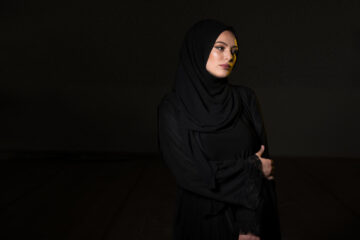Natural hair wigs have become increasingly popular for those who want to embrace their natural texture and showcase styles that mimic their own hair type. Designed to reflect the unique beauty of curly, coily, and wavy hair textures, natural hair wigs provide a range of styling options that are both fashionable and practical. Whether worn for personal expression, convenience, or as a protective hairstyle, natural hair wigs allow people to enjoy versatile and authentic looks without altering their natural hair.
Why Choose a Natural Hair Wig?
- Authentic Texture and Look: Natural hair wigs are crafted to look just like textured hair, with curls, coils, and waves that capture the essence of natural hairstyles. They provide a realistic appearance, blending seamlessly with the wearer’s natural hairline and making it difficult to distinguish between the wig and real hair.
- Protective Styling: Wearing a natural hair wig can protect your own hair from daily styling, manipulation, and environmental factors like sun exposure, pollution, and humidity. This can reduce breakage, maintain moisture, and support hair growth for individuals with naturally curly or coily hair.
- Styling Flexibility: Natural hair wigs allow you to experiment with different lengths, colors, and textures without committing to a permanent change. You can switch between styles like Afros, twist-outs, curly bobs, or kinky curls with ease, giving you the freedom to find the look that best suits you for any occasion.
Types of Natural Hair Wigs
- Human Hair Wigs: Human hair wigs are made from 100% real hair, providing the most natural look and feel. They can be washed, conditioned, and styled just like your own hair, and can even be heat-styled if desired. Human hair wigs are durable and offer a soft, natural movement, making them ideal for those seeking a realistic and flexible styling experience.
- Synthetic Wigs: High-quality synthetic wigs can offer a realistic look at a more affordable price. They are often pre-styled and retain their shape after washing, making them low-maintenance and easy to manage. While synthetic wigs may not be as versatile for heat-styling, they are excellent for those looking for a convenient and budget-friendly option.
- Lace Front and Full Lace Wigs: Lace front wigs have a lace panel at the front, creating a natural-looking hairline that allows the wig to be styled away from the face. Full lace wigs offer even more versatility, with lace throughout the cap, allowing for various parting styles. These types of wigs are ideal for creating realistic hairstyles, from updos to side parts.
Choosing the Right Natural Hair Wig
When selecting a natural hair wig, there are several factors to consider:
- Texture and Curl Pattern: Natural hair wigs come in a variety of textures, such as 3A to 4C curl patterns, representing loose curls to tight coils. Choosing a wig with a curl pattern that closely matches your own can help with blending if you plan to leave out any of your own hair.
- Length and Volume: Decide whether you prefer short, medium, or long styles, as well as the density (volume) of the wig. A denser gray wigs may give a fuller look, while a lower density may look more natural and lightweight.
- Color: Many natural hair wigs are available in natural colors like black, dark brown, and auburn, but they also come in bolder shades like blonde, burgundy, or ombré for those who want to experiment with color.
Caring for a Natural Hair Wig
Proper maintenance is essential to keep your natural hair wig looking fresh and vibrant. Here are some tips for caring for both human hair and synthetic natural wigs:
- Washing and Conditioning: Use sulfate-free shampoos and moisturizing conditioners to keep the wig soft and hydrated. Wash the wig every 6-10 wears, or as needed, to remove product buildup.
- Moisturizing: For curly and coily wigs, hydration is key. Use a lightweight leave-in conditioner or wig spray to keep curls defined and frizz-free. Avoid heavy oils, as they can weigh down the wig.
- Detangling: Use a wide-tooth comb or your fingers to gently detangle curly wigs, starting from the ends and working your way up. Avoid brushing the wig, as it can disrupt the curl pattern and cause frizz.
- Storing: When not in use, store your wig on a wig stand to maintain its shape and prevent tangling. Avoid direct sunlight, as it can fade the color and dry out the fibers.
Styling Tips for Natural Hair Wigs
- Define Curls: For a defined look, use a curl cream or mousse and scrunch the curls to enhance definition. For human hair wigs, you can use a curling wand on low heat for extra curl.
- Experiment with Accessories: Add headbands, scarves, or hairpins to give your wig a personalized touch. Accessories can also help secure the wig and add flair to your style.
- Customizing the Hairline: For a more natural look, pluck a few hairs along the hairline or add baby hairs. This creates a softer, more realistic appearance along the forehead.
Conclusion
Natural hair wigs celebrate the beauty and versatility of textured hair, allowing people to embrace curls, coils, and waves with confidence. These wigs provide a natural look while offering protection, ease of styling, and flexibility for various looks. Whether you’re looking to try out a new style, protect your natural hair, or enhance your overall look, natural hair wigs can provide a transformative, authentic appearance that highlights your unique style.

0 Comments